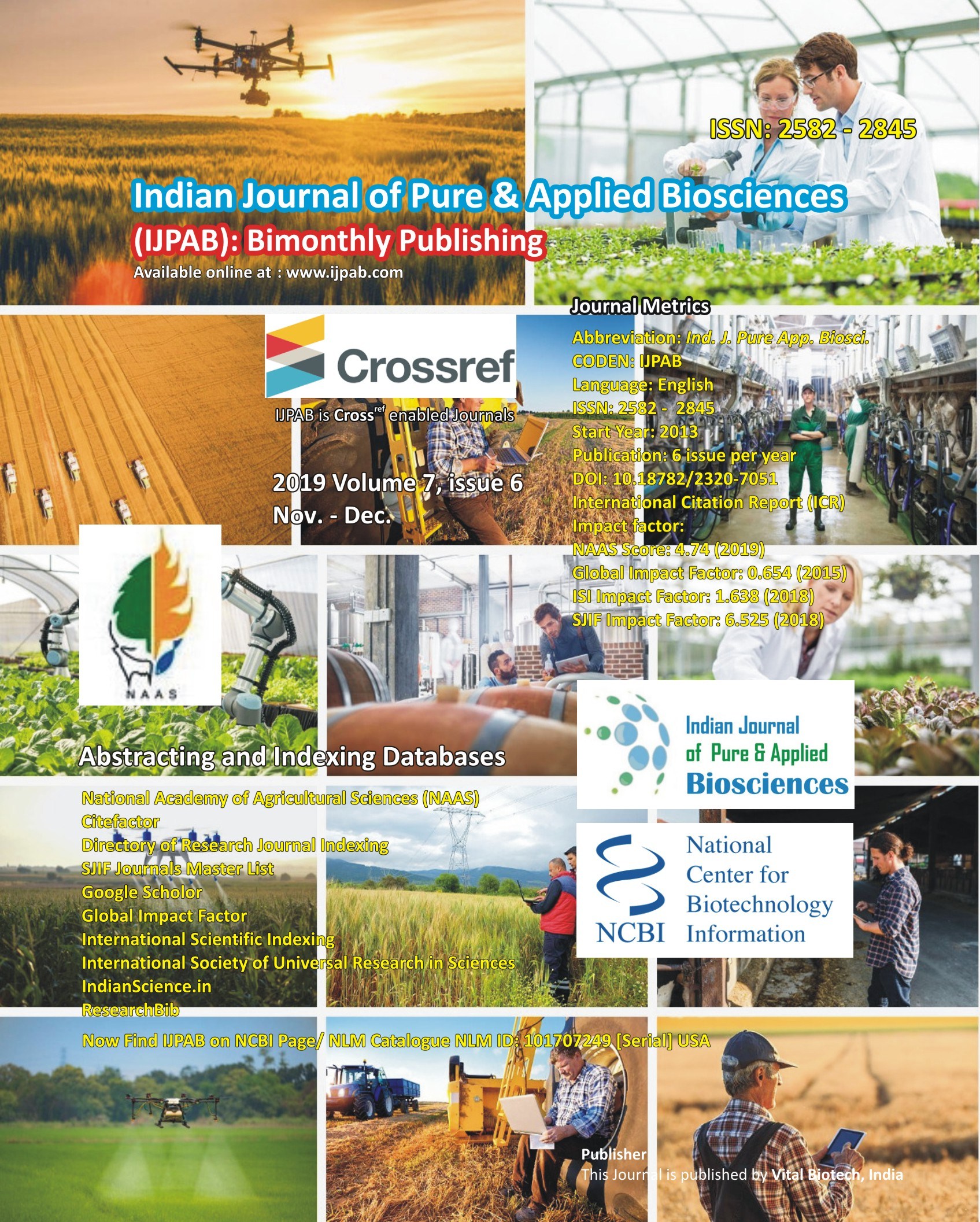
-
No. 772, Basant Vihar, Kota
Rajasthan-324009 India
-
Call Us On
+91 9784677044
-
Mail Us @
editor@ijpab.com
Indian Journal of Pure & Applied Biosciences (IJPAB)
Year : 2019, Volume : 7, Issue : 6
First page : (307) Last page : (316)
Article doi: : http://dx.doi.org/10.18782/2582-2845.7919
Effect of Planting Methods and Management Practices on Banded Leaf and Sheath Blight and Bacterial Stalk Rot of Maize
Bhuwan Chandra Sharma* and Rajesh Pratap Singh
Department of Plant Pathology, Collage of Agriculture, Govind Ballabh Pant University of Agriculture& Technology, Pantnagar, Udham Singh Nagar - 263145, Uttarakhand, India
*Corresponding Author E-mail: bhuwanreena@gmail.com
Received: 12.11.2019 | Revised: 9.12.2019 | Accepted: 17.12.2019
ABSTRACT
Banded leaf and sheath blight caused by Rhizoctonia solani and Bacterial stalk rot caused by Dickeya zeae (Erwinia chrysanthemi pv. zeae) are highly destructive disease of maize crop worldwide including India. These are serious constraint and limit maize production considerably in various hot and humid tropical maize growing regions of the world. It may cause premature death, stalk breakage and ear rot. It reduces the grain yield and grain quality for human consumption. Loss in grain yield ranges from moderate to high depending upon weather conditions. During the recent year stalk rots has emerged as one of most important disease in kharif sown maize crop in India. Both the diseases have been described from various parts of the world. These pathogens have wide host range which makes it difficult to manage. Growing conditions creating warm and wet conditions are most favorable for the development of the disease. A field experiment was carried out by integrating planting methods like- paired row planting, ridge planting and flat planting along with different management approaches like- chemical, biological and integrated for the management of Banded leaf and sheath blight and Bacterial stalk rot of maize under tarai condition of Uttrakhand. Results of present study indicated that ridge planting and paired row planting methods and in management practices, chemical control and integrated management methods were found equally good in minimizing the incidence and severity of Banded leaf and sheath blight and Bacterial stalk rot. However, ridge planting and chemical control measure provided significantly higher yield as compared to paired row planting and integrated management practices. Biological control was found least effective.
Keywords: Bacterial stalk rot, Planting methods, Chemical control, Biological control, Integrated management.
Full Text : PDF; Journal doi : http://dx.doi.org/10.18782
Cite this article: Sharma, B.C. & Singh, R.P. (2019). Effect of Planting Methods and Management Practices on Banded Leaf and Sheath Blight and Bacterial Stalk Rot of Maize, Ind. J. Pure App. Biosci. 7(6), 307-316. doi: http://dx.doi.org/10.18782/2582-2845.7919

